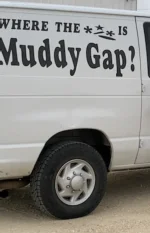GON
$150 Site Donor 2025
The stretch of Interstate on I80 from Evanston, WY to Cheyenne, WY has to be the worst stretch of Fall- Winter- Spring driving in CONUS on a regular basis. I have driven all over the USA for decades in bad weather. Drove mountain passes in Afghanistan. , All of Alaska. I70 Denver to Grand Junction... yawn....Donner pass, easy as eating a pancake compared to I80 in Wyoming.
The reason this is so crazy dangerous is the winds. Near CAT 1 hurricane force winds on a REGULAR basis. The causes any moisture to be a major accident waiting to happen. Add all the dynamic road grades, curves, and lack of visibility. Just insane.
I have been stuck at least 10 times a minimum of 12 plus hours on this stretch of I80 over the past three years. It can get crazy bad in October. I have seen mile after mile of small trailers forced off their tow vehicle and the shoulder being a "trailer graveyard".
I am a big proponent of going an extra 100-200 miles and bypassing I80 in Wyoming if feasible.
If you ever are taking (or planning on) I80 through Wyoming in the Fall- Winter- Spring, highly recommend monitoring the web-site every 30 minutes:
https://wyoroad.info/pls/Browse/WRR.RoutesResults?SelectedRoute=I80
The reason this is so crazy dangerous is the winds. Near CAT 1 hurricane force winds on a REGULAR basis. The causes any moisture to be a major accident waiting to happen. Add all the dynamic road grades, curves, and lack of visibility. Just insane.
I have been stuck at least 10 times a minimum of 12 plus hours on this stretch of I80 over the past three years. It can get crazy bad in October. I have seen mile after mile of small trailers forced off their tow vehicle and the shoulder being a "trailer graveyard".
I am a big proponent of going an extra 100-200 miles and bypassing I80 in Wyoming if feasible.
If you ever are taking (or planning on) I80 through Wyoming in the Fall- Winter- Spring, highly recommend monitoring the web-site every 30 minutes:
https://wyoroad.info/pls/Browse/WRR.RoutesResults?SelectedRoute=I80
Last edited:


